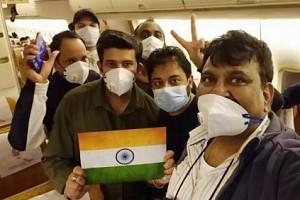World sees Mystery in India's low COVID19 Fatality Rate; India has its Reasons!
Home > News Shots > India newsWhile the novel coronavirus has shook the bedrock of many economies and left developed nations staggering due to the situation, the low number of positive cases and deaths reported in India has alarmed as well as surprised the world.

It’s been almost two months since India recorded its first COVID-19 case but despite being the world’s second most populous country, India has recorded 27,000 cases and 800 deaths. All experts unanimously agree that the death toll is low.
Apart from the number of reported deaths, the doubling period that is the time taken for the total deaths to double, is also taken into consideration to assess the spread of the virus. India fares well in this criterion too. The doubling period in India is nine days at present, which is again better than other nations.
Many theories and reasons are being jotted down as possible reasons behind India’s low fatality rate.
The rigorous nation-wide Lockdown is being seen as an effective measure that helped in curbing the spread of the virus. The medical journal Lancet says the "lockdown is already having the desired effect of flattening the epidemic curve".
Looking at India’s demography, some cite that the presence of a large young population could be the reason behind low fatalities since corona trends indicate that elderly people are more prone to the virus.
Many people once again turn the spotlight to low testing rates. "It's a mystery, I'd say and part of the mystery is we are not doing enough testing. If we tested more then we'd know the answer," Indian-American physician and oncologist Siddhartha Mukherjee told the media.
There is definitely an impending need to widen the testing criteria and include testing of asymptomatic individuals in order to gather accurate results and analyse the actual impact of the pandemic.
At the same time, the focus is also often shifted to India’s missing COVID-19 deaths. Media reports published by The New York Times, FInancial Times and The Economist highlight that a lot of deaths go unreported and does not get recorded as a Coronavirus related death.
A report published by The New York Times elucidated how at least 40,000 more people died during the coronavirus pandemic than the official death counts in March. Similarly, Financial Times studied the fatalities in 14 countries and found that the death toll might be 60% higher than reported in official counts.
None of these reports featured India, which is understandable due to the inaccessibility to accurate data. According to BBC’s report, most of the deaths occur at home in India and deaths might be attributed to some other cause and goes unreported. "A lot of people get some medical attention over time, return and die at home in India," Dr Prabhat Jha, the principal investigator of MIllion Death Study told BBC.
Suggestions like counting the funerals at crematoria and burial grounds also has its own limitations since a lot of cremations happen in open areas in rural India where funeral services are not availed. Tracking asymptomatic cases and deaths seems like a wild goose chase at this point due to the sheer size of the population.
"Recording the number of deaths due to Covid-19 is not very meaningful to evaluate the severity of the disease. The number of hospital admissions is somewhat better, but it does not include all deaths outside the hospital," said Jean- Louis Vincent, a professor of Intensive Care Medicine at Belgium's Erasme University Hospital.
Some say governments might hide the real figures to avert people from fearing and instigating panic. Some experts also suggest that no one is trying to hide deaths intentionally and attempts to hide mass deaths might fail.
While all these theories, arguments and counter arguments are valid, it would be fair to say that we still do not have answers and have a long way to go.
